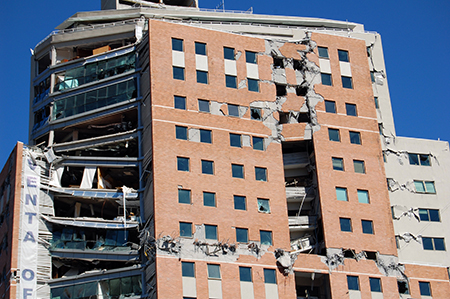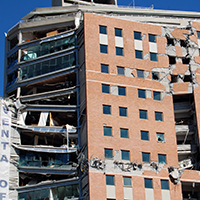 David Hojman is Professor of Economics and International Business in the University of Liverpool’s Management School
David Hojman is Professor of Economics and International Business in the University of Liverpool’s Management School
“The recent Chilean earthquake, which registered 8.2 on the Richter scale, is remarkable because of the very small number of people it killed: only seven.
From a research perspective, the conditions surrounding it allow us to learn more about how to avoid deaths from disasters. Lessons can be derived which apply to dam bursts, earthquakes, famines, floods, forest fires, hurricanes, tsunamis, volcanic eruptions and so on.
Fatalities increase with corruption and inequality
Earthquakes as strong as this or even milder often kill people by the tens of thousands. Studies show that, for a given Richter intensity, fatalities decline with national income per capita and increase with corruption and inequality.
Chile suffered a previous earthquake in February 27, 2010 -, Richter 8.8 with 365 deaths and conditions for a comparison with 2014 are practically perfect.
Corruption and inequality change only slowly. Possibly in 2014 they were the same as in 2010 (low and high, respectively). Even the government was the same: a centre-left coalition headed by President Michelle Bachelet, in the last two weeks of its first period in office in 2010, and in week three of its second period in office in 2014. The centre-right administration of President Sebastian Piñera governed between March 2010 and March 2014.
In 2010, about a third of the fatalities could have been avoided. They were caused by a tsunami predicted by both US and Chilean agencies. Unfortunately, Chile’s National Emergencies Office (ONEMI) failed to raise the alarm. The reasons are still being examined in court, but they could include political rather than technical appointments, no training, telephones that had not been taken out of their delivery boxes, officials not being allowed to decide without consulting line managers, and no evening or weekend shifts.
The Piñera government trebled ONEMI’s budget between 2010 and 2013, increased and trained staff, appointed as head of ONEMI a highly respected retired army general, massively increased the number of earthquake sensors, introduced a comprehensive tsunami early warning system, and arranged many evacuation drills. In the 2014 earthquake all these resources and factors contributed to a positive result. Bachelet, and Chileans generally, benefited from the investments in prevention made by Piñera (also anti-seismic building regulations had been becoming more strict, and enforcement better, for many years before 2010).
By definition, populist policies are misleadingly offered as alternatives to the technically optimal policy, but they are unable to achieve the desired objectives, ultimately more expensive, or both. Piñera is no populist. Moreover, after the globally-acclaimed successful rescue of the 33 buried miners in October 2010, many Chileans were under the impression that everything was possible.
Since Chile has the worst earthquakes, and money was no object, investing in the best prevention made sense. However, keeping populism under control was always a concern. In 2010, anti-looting military units were not deployed for many hours after looting had started. By contrast, in 2014 units were deployed immediately and no looting took place or arrests were made.
Populism and populism narrowly avoided
The Santiago daily newspaper El Mercurio has never mentioned that the new tsumani early warning system was developed by Israeli firm eVigilo. This is no secret: eVigilo advertises it in their publicity all around the world. But, given the many populist pressures Chilean governments are exposed to (Bachelet’s in particular), there is always a danger that the ONEMI-eVigilo arrangement, despite being technically superior to the alternatives, could be derailed by pro-Palestinian Chilean supporters of an anti-Israeli boycott. There are many other examples of both populism and populism narrowly avoided.
Education about the disaster-related dangers of populism is essential in a healthy democracy. For example, in the UK the BBC could educate the public about the full, true benefits and costs of alternative incentives, building regulations and other policies aimed at encouraging (or not) new developments away from flood-prone areas.”
